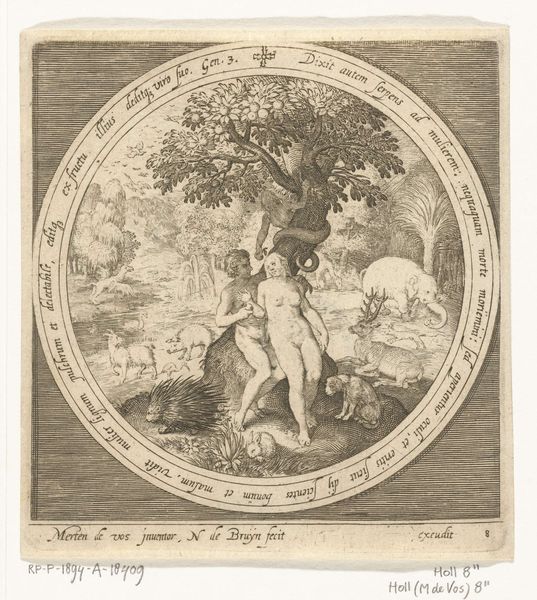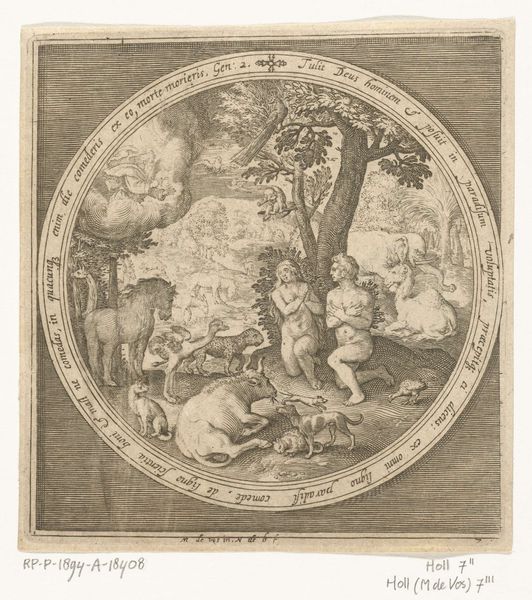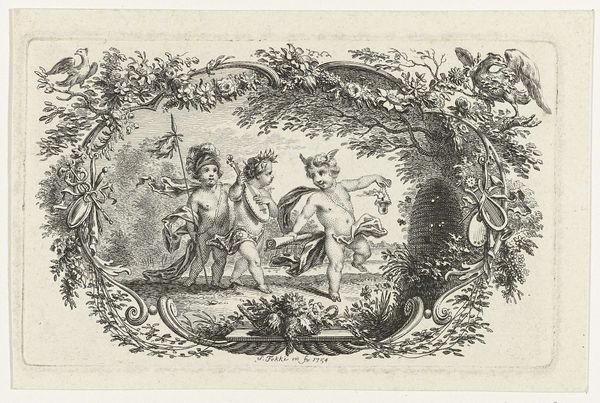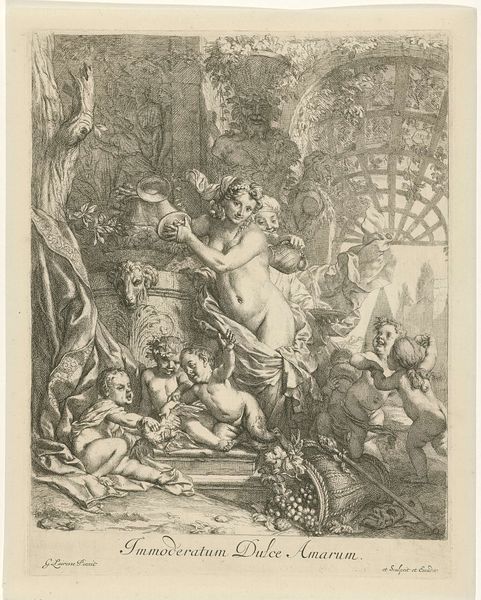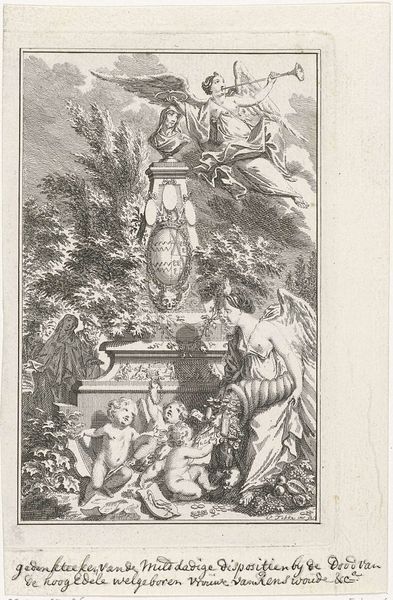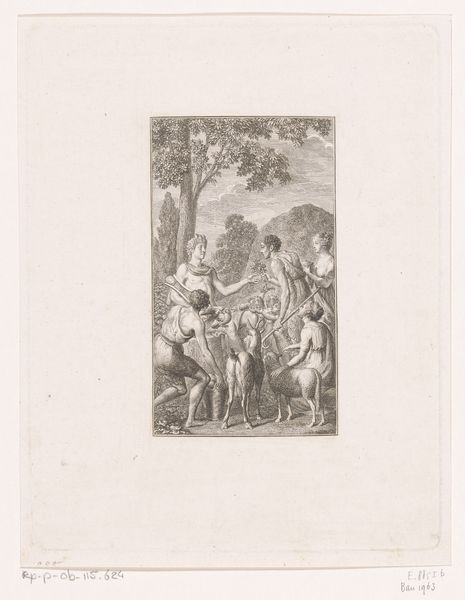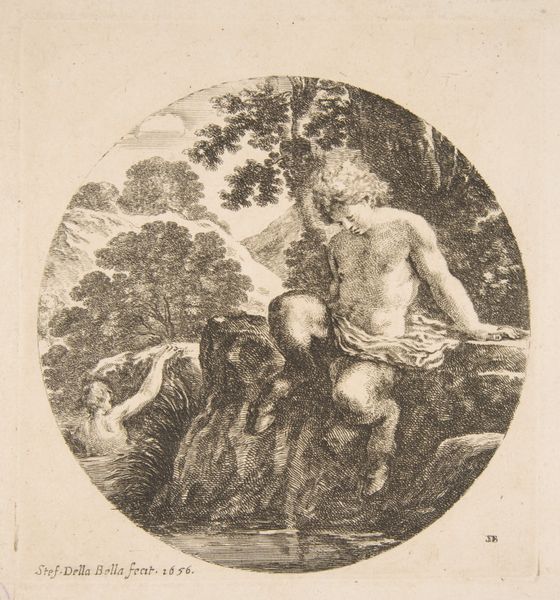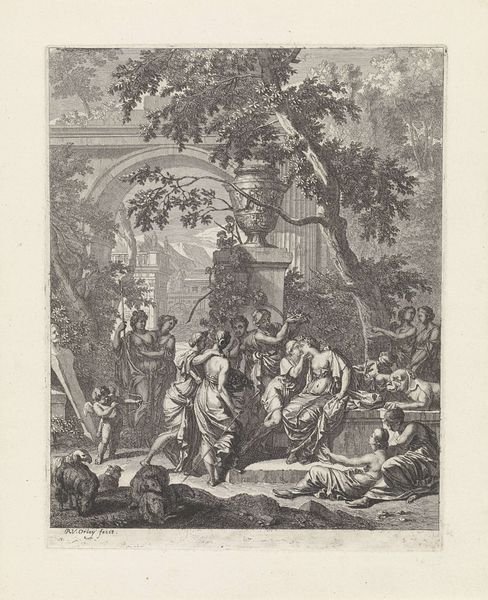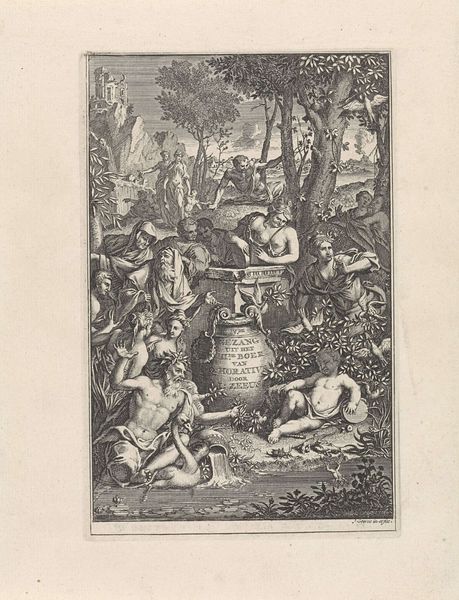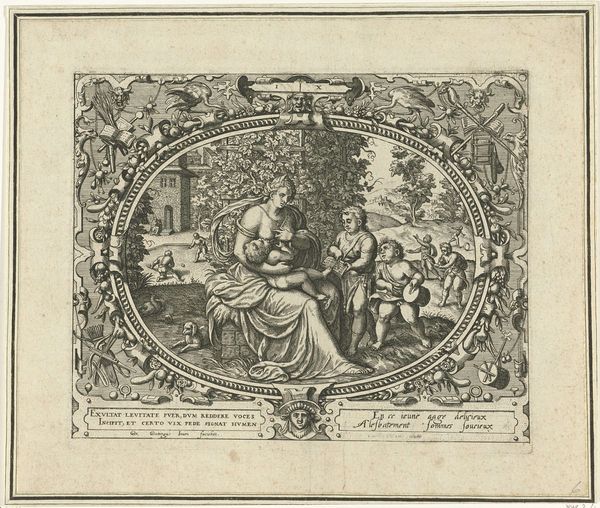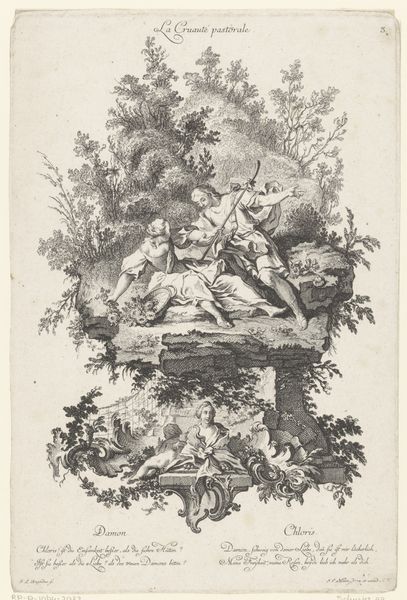
Eva wordt misleid door de slang bij de boom van goed en kwaad 1581 - 1656
print, engraving
baroque
landscape
figuration
history-painting
northern-renaissance
engraving
Dimensions: height 136 mm, width 127 mm
Copyright: Rijks Museum: Open Domain
Editor: Here we have Nicolaes de Bruyn's engraving, "Eva wordt misleid door de slang bij de boom van goed en kwaad," dating somewhere between 1581 and 1656. It's a fairly small circular print, but it’s crammed with detail—Adam, Eve, the snake, tons of animals… The overall effect is, I don’t know, a little unsettling? What do you see in it? Curator: Unsettling is a great word. Beyond the obvious biblical narrative, consider the power dynamics at play here. Eve's agency, or lack thereof, has been a constant site of debate throughout history. Notice how the serpent, a traditionally masculine symbol, whispers directly to her. Editor: Right, I see what you mean. It’s not just a depiction of temptation, but also maybe about patriarchal influence? Is that what you’re suggesting? Curator: Exactly! Look at the inscription circling the image. The serpent claims they won't die but become knowledgeable – a kind of proto-feminist promise of enlightenment through transgression against a divine patriarchal order. And consider the historical context—the Dutch Golden Age, with its own religious and social constraints, likely informed the way De Bruyn depicted this pivotal moment. What does it mean to depict this at a time when roles of men and women where strictly regulated? Editor: So, De Bruyn isn't just illustrating a Bible story, but is engaging with contemporary debates around knowledge, authority, and even gender? Curator: Precisely. By showcasing the serpent's manipulative persuasion and Eve's receptive pose, the artist invites us to interrogate the very nature of obedience, questioning who defines 'good' and 'evil,' and the consequences of challenging established norms. It is a reminder that narratives surrounding the so-called "fall" of women need to be critiqued and re-evaluated. Editor: I never thought of it that way, seeing it less as a condemnation of Eve and more as an observation on the power dynamics of the time. I'll definitely remember to think more about context! Curator: Absolutely. Art offers rich layers of meaning when viewed through the lenses of historical, social, and theoretical frameworks.
Comments
No comments
Be the first to comment and join the conversation on the ultimate creative platform.


